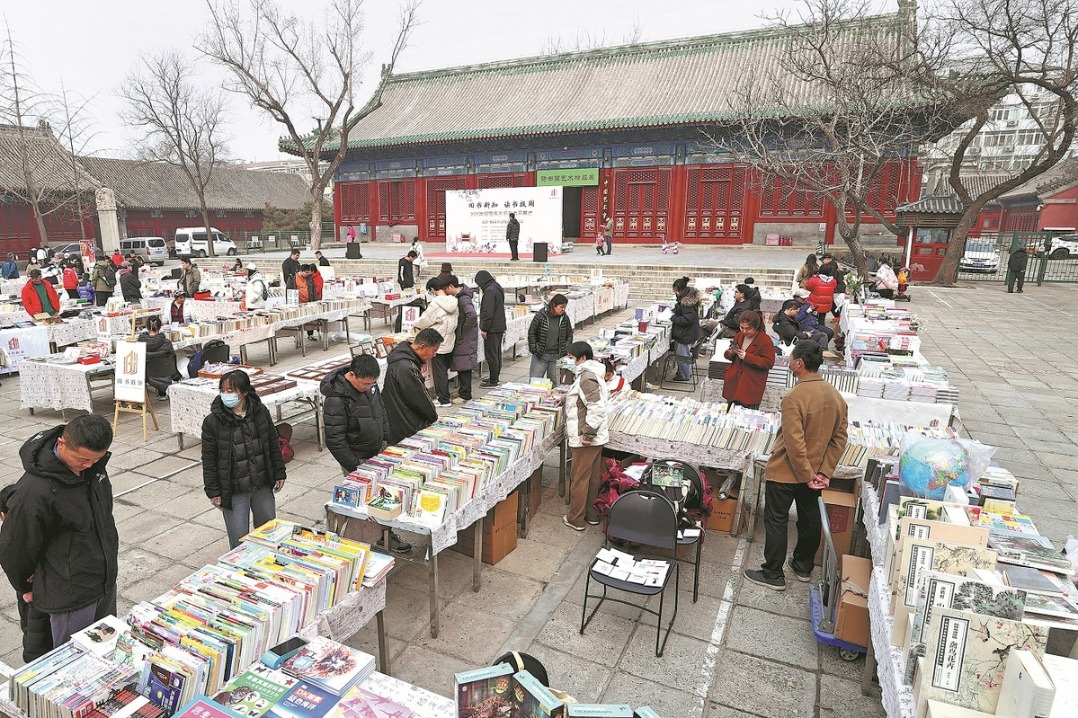Jianli's farmland protection yields results

Nestled alongside a vast expanse of farmland in Jianli, a county-level city in Hubei province, a stone tablet inscribed with hand-written crimson characters under the title "six prohibitions" stands as a monument to China's pioneering basic farmland reserve.
The marker serves as a testament to the nation's decadeslong commitment to safeguarding arable land. Thanks to this resolve, Jianli and many other regions across the country have undergone a profound transformation — shifting from vulnerability to arbitrary occupation and degradation to thriving under intensive cultivation and technological innovation.
"Back in the 1980s, China's reform and opening-up spurred economic growth, benefiting township enterprises," said Liu Hanyao, a former official with Jianli's land management bureau who helped lead the local effort. "But at the same time, industrialization and urbanization began to encroach on farmland. National infrastructure projects, rural housing and even land reclamation for afforestation put further pressure on limited arable land."
With grain yields modest — averaging just 2.25 to 3.75 metric tons per hectare — and a growing population, food security became a pressing challenge.
In response to mounting concerns over declining harvests and rural incomes, Jianli designated a basic farmland experimental area in March 1988, covering 2,530 hectares, or 92.2 percent of its total arable land. A tablet was installed beside the fields, listing six prohibitions: no house construction, grave burials, sand or soil excavation, brick production, field destruction for afforestation, or digging of fish ponds.
The experiment helped lay the foundation for the county's rise as one of the nation's top grain-producing regions, known today for mechanized farming, technological advancement and stable, high-quality growth.
"We now use machines for every stage of rice cultivation — from sowing and seedling care to planting, fertilizing, pesticide application, and even harvesting and drying," said Zhou Zhentao of the county's agricultural machinery cooperative. "This has dramatically reduced the labor burden for farmers and made the process more efficient."
Zhou said the cooperative prioritizes quality over quantity in rice production. Farmers apply environmentally friendly, nontoxic pesticides and fertilizers to ensure safety and maintain high standards.
Digital technology has further boosted land management by enabling automated monitoring, analysis and real-time early warnings for any suspicious activity.
Tan Dunbin, director of the county's natural resources and planning bureau, said Jianli has improved grain yields through land quality optimization, the use of superior seed varieties and mechanization.
Building on lessons from Jianli, China introduced national regulations for basic farmland protection in 1994, detailing both the scope and necessary safeguards. The country's 2024-2035 plan to strengthen its agricultural base upholds the red line of 124 million hectares of arable land and 103 million hectares of permanent basic farmland nationwide.
He Yong, head of the farmland protection and supervision division of the Ministry of Natural Resources, said the ministry is working with the Ministry of Agriculture and Rural Affairs to draft new management measures for a permanent basic farmland red line. The goal, he said, is to improve overall land quality by allowing the replacement of lower-quality plots with better ones.




































